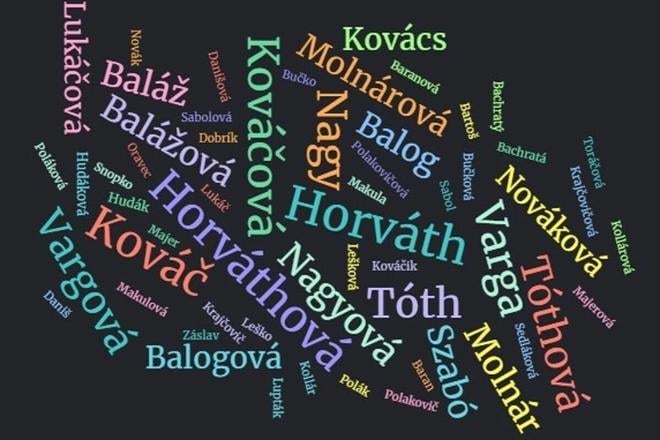Slovakia’s top three surnames have held firm for years, reflecting a tapestry of cultural and occupational influences across the nation.
Horváth (for men) and Horváthová (for women) continue to lead, followed by Kováč, Kováčová, Varga, and Vargová. Since 2003, the popularity of Horváth and Horváthová has surged, from 30,813 to over 69,000 individuals sharing the name.
In Slovakia, surname preferences show regional variations. While Horváth dominates in Bratislava, Trnava, and Košice, other cities favour surnames like Balog, Kováč, Baláž, Ševčík, or Varga. The Interior Ministry reports that Horváth and Horváthová remain the most common, with 36,772 men and 32,234 women carrying these names—a 4,000-person increase since late 2020.
Kováč is the second most common male surname, with the Hungarian variant Kovács ranking tenth. Names like Varga, Tóth, Nagy, Szabó, Molnár, Baláž, and Balog round out the male top ten, while the female list mirrors this order up to fifth place, followed by Balážová, Molnárová, Balogová, Nováková, and Lukáčová.
Iveta Valentová, a linguist at the Slovak Academy of Sciences, explains that many of these names reflect ethnic or occupational origins. “Horvát” means Croat in Hungarian, while “Tót” once denoted Slovaks and other non-Hungarian nationalities. Names like Kováč (blacksmith) and Molnár (miller) denote trades, while Baláž (from Blažej) and Lukáč (from Lukáš) stem from given names. Others, like Nagy (“big” or “elderly”), derive from physical characteristics.
In Bratislava, the surname trends align with national patterns but include unique entries like Polák, Novák, Zeman, and variations on “miller”, such as Molitoris (Latin) and Müller (German).
Below are the lists of the most frequent surnames found across regional capitals, along with a glimpse into their linguistic and cultural origins.


